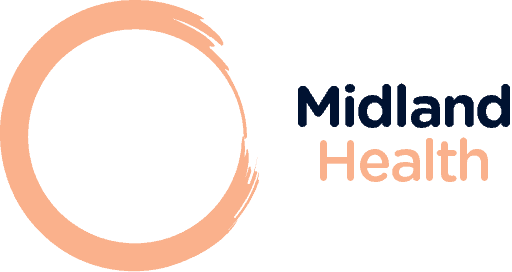When unmanaged, hay fever symptoms become a serious problem for children and adolescents, especially those who are approaching the exam period. The height of hay fever season also referred to as allergic rhinitis season, happens to coincide perfectly with the spring and summer exam sittings.
Fortunately, there are innovative hay fever treatments readily available to help your child manage their symptoms so they can focus on their schoolwork. Keep reading to learn more about the most effective treatments for under 18s.
What is Hay Fever?
Hay fever is the result of an allergy to particular airborne particles, including pollens from plants, trees and grasses, dust mites, mould spores and animal fur.
For those who experience hay fever symptoms all year round, the allergic reaction often comes from dust mites and pet dander; however, those who only suffer seasonally, typically have an allergy to different pollens.
How Does Hay Fever Affect Children?
Our noses filter the air we breathe in, catching tiny particles within the small hairs and mucus inside each nostril. All of the allergens mentioned above are airborne and, if breathed in, will be filtered out by the nose’s features. But, once the particles are nestled in the hairs and mucus, they are trapped. For children with allergies to these allergens, this causes a reaction and messages are sent from the brain to defend the body by producing antibodies (histamines).
It is primarily these histamines which trigger your child’s hay fever symptoms. Commonly, hay fever will present itself through:
- Sneezing
- A runny or congested nose
- Itchy or watery eyes
- Itchy throat or ears
- A postnasal drip, which presents itself as a cough or sore throat
- General fatigue
With extreme allergic reactions, it is possible to see hives, rashes (particularly eczema) and wheezing. Regardless of your child’s severity, when concentration is key at school, especially with looming tests, any of the above symptoms are extremely distracting.
Identifying Your Child’s Hay Fever
Surprisingly, hay fever affects approximately 30% of children. If your child is experiencing any of the above, there are a couple of tests you can arrange to get a confirmed diagnosis and start exploring your child’s treatment options.
By arranging for your child to have either an allergy test of a skin prick or a blood test, a qualified allergy specialist can confirm the likelihood of a hay fever allergy by analysing your child’s reaction to a specific allergen or monitoring the levels of IgE antibodies.
If hay fever is prevalent in the family, then there is an increased likelihood that your child will follow suit.
Hay Fever Treatments for Children
When it comes to alleviating hay fever symptoms in children, several treatment options are available, each tailored to address specific needs and preferences. Here’s an overview of the most common approaches:
Antihistamines
Antihistamines are a cornerstone of hay fever treatment and are available in both over-the-counter and prescription forms. They work by blocking the action of histamine, a chemical released by the immune system in response to allergens. This helps to alleviate symptoms such as sneezing, itching, and runny nose.
Management Techniques
Avoidance techniques aim to minimise exposure to allergens that trigger hay fever symptoms. This may involve keeping windows closed during high pollen seasons, using air purifiers to remove allergens from indoor air, regularly washing bedding to remove dust mites, and avoiding outdoor activities during peak pollen times. Identifying and avoiding specific triggers can significantly reduce the frequency and severity of hay fever symptoms in children.
Immunotherapy
Immunotherapy, also known as allergy shots or allergy immunotherapy, is a long-term treatment option for hay fever that involves gradually desensitising the immune system to allergens. It works by exposing the child to small, gradually increasing doses of allergens over time, helping the immune system build tolerance and reduce allergic reactions.
Evaluating Your Options
When it comes to managing hay fever symptoms in children, parents often seek safe and effective treatment options that provide rapid relief without unwanted side effects. While antihistamines and nasal corticosteroids are commonly used, a promising alternative known as Rhinolight is gaining attention for its innovative approach and numerous benefits.
The Benefits of Rhinolight
Rhinolight is a cutting-edge phototherapy treatment specifically designed to target the underlying causes of hay fever symptoms. It utilises low-level light therapy to reduce inflammation in the nasal passages and alleviate congestion, sneezing, and itching associated with allergic rhinitis.
One of its key advantages is its non-invasive nature. Unlike traditional treatments that may involve medications or injections, Rhinolight therapy is gentle and painless, making it well-suited for children of all ages. The procedure is quick and easy, typically requiring only a few sessions to achieve a noticeable improvement in symptoms.
Another benefit is its effectiveness in providing rapid relief. By directly targeting the mucus in the nose, it helps to suppress the inflammatory response triggered by the allergens, stopping the brain’s need to create antibodies. As a result, congestion, sneezing, and itching are reduced. In fact, many children experience significant symptom improvement after just a few sessions of Rhinolight therapy.
Taking Exams in Hay Fever Season
Yet another positive of Rhinolight therapy is the lack of drowsiness it causes. It has been proven that children who are either, battling through hay fever symptoms, or managing their symptoms with antihistamines, are 40% more likely to drop a grade from their targeted predictions. With anti-histamines known for their drowsiness, another option is needed to keep your child alert and their symptoms at bay.
With exams now fast approaching, there is still time to book your child in for Rhinolight therapy. If multiple sessions are required, it is possible to administer additional doses in quick succession, ensuring your child is protected and able to focus on their studies.
Book a session of Rhinolight appointment today, or arrange an allergy testing appointment to discuss whether hay fever is the cause of your child’s discomfort. For more information, reach out to us today.

